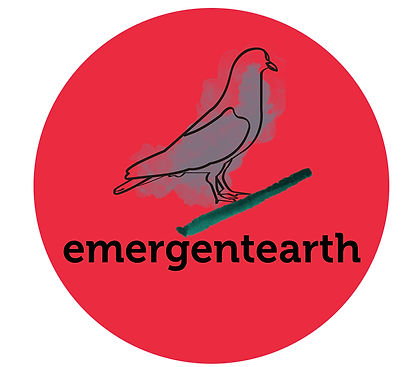an emergent
website design
by
peter jay stein, md, ma
atmosphere
asthenosphere
lithosphere
regolith
biosphere
hydrosphere



This 54 page synopsis of the evolution
of the Earth, the origin and progression of life, and the
emergence of humans as descendants of the hominin lineage, divides the last 4.57 billion years into progressively overlapping, imagistic, time segments, to outline our place in biological existence.
magnetosphere
ionosphere
THIRTY-FIVE
Emergent Ordovician Period: 486 - 443 mya
Features of the Ordovician period: 486 - 443 mya:
(The 2nd period of the Paleozoic era.)
3) Most of the Earth's land masses are covered by shallow seas, dominated by diverse marine invertebrates, including trilobites, brachiopods (bilateral shell symmetry), cephalopods (mollusks related to octopus and squid), and crinoids (echinoderms) on the ocean floor.
4) Coral reefs, the first terrestrial (land-dwelling) plants, and the first jawless (agnathans) fishes appear (the ostracoderms).
5) The supercontinent Gondwanaland includes Australia, Africa, S.America, southern Europe, and Antarctica
6) The second largest mass extinction occurs, (2nd to the Permian) of marine life in the Late Ordovician, due to global glaciation, sea-level drop, and climate change.

7) Land lichens metabolize rock to form soil.
1) "...encompasses one of the greatest evolutionary radiations recorded in the history of life...known as the Great Ordovician Biodiversification Event or GOBE...[when] marine biodiversity increased three-fold...to reach...1600 genera..." (The Geologic Time Scale, 2012, p. 507).
2) With seven formalized stages, there was an early "hot-house" climate, a middle cooling, followed by a late global glaciation and mass extinction (ibid., p. 489).